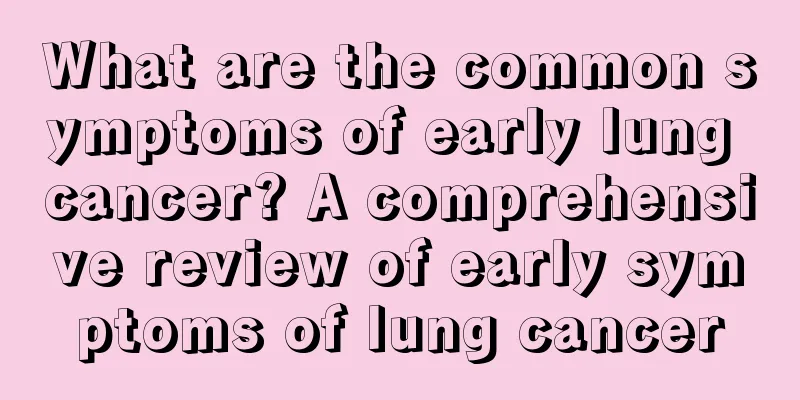Characteristics of cell membrane structure

|
All living things in the world live together. Most living things are made up of cells, and only a small number of viruses have no cell structure. Humans are also living things made up of cells. The fertilized egg is a cell structure at the beginning. After continuous division and differentiation, it eventually forms a fetus. Well, all cells have cell membranes. What are the structural characteristics of cell membranes? Structural characteristics of cell membrane: The cell membrane has a certain fluidity. The structure of the cell membrane is that the middle phospholipid bilayer constitutes the basic skeleton, and protein molecules are embedded, penetrated, and covered in the phospholipid bilayer or on the surface at different depths. The phospholipid molecules and protein molecules that make up the membrane are mostly mobile, and the movement of substances in and out of cells through the cell membrane is based on the fluidity of the membrane. Functional characteristics of cell membrane: cell membrane is selectively permeable. The cell membrane has the function of regulating the entry and exit of substances into and out of the cell. Substances enter and exit the cell through diffusion, osmosis, passive transport, active transport, endocytosis and exocytosis. The types and quantities of carrier proteins on the membrane are different, so many molecules and ions cannot enter and exit the cell at will. Cell membrane: Also known as plasma membrane. A thin membrane on the surface of cells. Sometimes called the extracellular membrane or plasma membrane. The thickness is about 7 to 8 nm, and the chemical composition of the cell membrane is basically the same, mainly composed of lipids, proteins and carbohydrates. The content of each component is approximately 50%, 40%, and 2%~10% respectively. Among them, the main components of lipids are phospholipids and cholesterol. In addition, the cell membrane also contains a small amount of water, inorganic salts and metal ions. Structure of cell membrane: 1. Membrane lipids: Membrane lipids are mainly composed of phospholipids, cholesterol and a small amount of glycolipids. In the membrane lipids of most cells, phospholipids account for more than 70% of the total, cholesterol does not exceed 30%, and glycolipids do not exceed 10%. Phospholipid molecules exist in the plasma membrane in the form of a lipid bilayer, with the hydrophilic ends facing the extracellular fluid or cytoplasm, and the hydrophobic fatty acid hydrocarbon chains facing each other, forming a hydrophobic region inside the membrane. 2. Membrane proteins: Cell membrane proteins (including enzymes) are mainly combined with membrane lipids in two forms: intrinsic proteins and extrinsic proteins. Intrinsic proteins are covalently bound to the hydrophobic part of phospholipids with their hydrophobic parts, and both ends are polar, penetrating the inside and outside of the membrane; extrinsic proteins are bound to the outer ends of intrinsic proteins or to the hydrophilic heads of phospholipid molecules with non-covalent bonds. Such as carriers, specific receptors, enzymes, and surface antigens. There are two main types of transport proteins on the cell membrane: carrier proteins and channel proteins. Carrier proteins, also known as carriers, permeases and transporters, can bind to specific solutes and transfer the bound solutes to the other side of the membrane through changes in their own conformation. Some carrier proteins require energy to drive, while others do not, and transport substances by assisted diffusion. 3. Membrane sugar: membrane sugar and sugar coating: glycoproteins and glycolipids. Cell membrane carbohydrates are mainly oligosaccharide chains and polysaccharide chains, which are covalently bound to membrane lipids or proteins to form glycolipids and glycoproteins. |
>>: The basic skeleton of the cell membrane
Recommend
How to solve the cause of sweating around eyes?
The area around the eyes, like other parts of the...
What does the labia minora look like when closed?
When taking biology classes in school, many peopl...
Can women wash their hair during their periods?
It is a normal physiological phenomenon for women...
Can saliva kill AIDS?
In the years since the reform and opening up, peo...
What are the symptoms of advanced small cell lung cancer
Patients with advanced small cell lung cancer thi...
Let's analyze the common causes of bone cancer
Clinically, the cause of bone cancer has always b...
Drinking tea can control epileptic seizures in brain cancer patients
One of the main symptoms of brain cancer is epile...
What to eat for lung cancer radiotherapy
During radiotherapy for lung cancer, you can eat ...
Can patients with advanced lung cancer still be treated?
Many people generally believe that if you have ca...
What are the main methods for treating lung cancer? What are the common symptoms of patients with advanced lung cancer?
What are the main treatments for lung cancer? Sur...
What's wrong with coughing up black phlegm due to lung cancer
What’s wrong with coughing up black phlegm due to...
Can TCM cure laryngeal cancer?
Traditional Chinese medicine is a traditional met...
What is the best way to treat advanced bladder cancer? Surgery + chemotherapy can help you treat advanced bladder cancer
How to treat advanced bladder cancer? How long do...
What is the cause of sudden palpitations and chest tightness?
Nowadays, as people's living standards contin...
Why does the back of my feet sweat when I soak my feet?
The temperature in winter is very low, which will...









